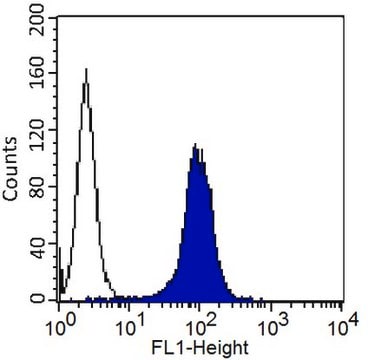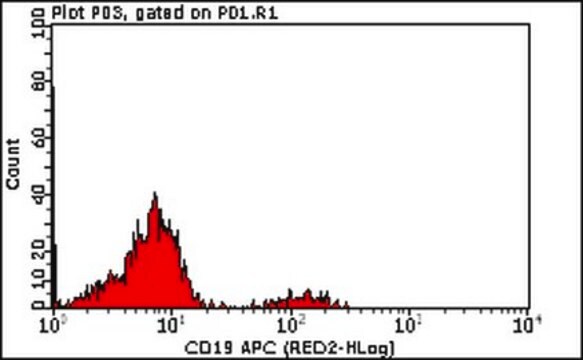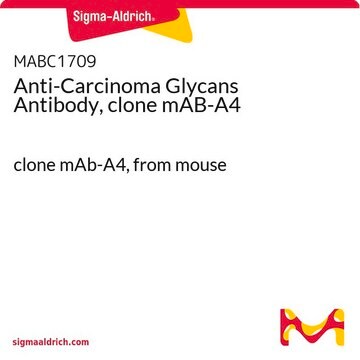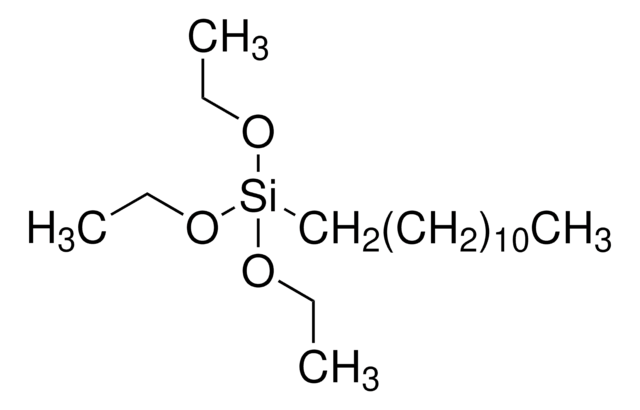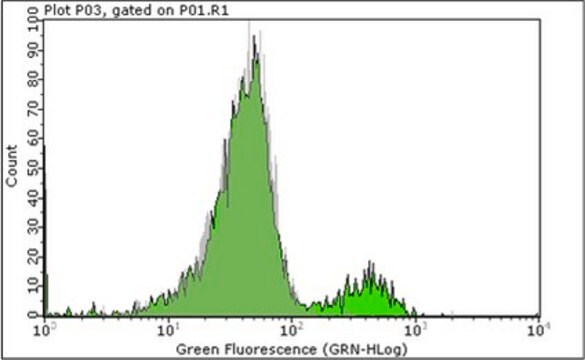MAB16985
Anti-MCAM Antibody, clone P1H12
clone P1H12, Chemicon®, from mouse
Synonym(e):
CD146 antigen, Cell surface glycoprotein P1H12, Melanoma-associated antigen A32, Melanoma-associated antigen MUC18, S-endo 1 endothelial-associated antigen, melanoma adhesion molecule, melanoma cell adhesion molecule
About This Item
Empfohlene Produkte
Biologische Quelle
mouse
Qualitätsniveau
Antikörperform
purified immunoglobulin
Antikörper-Produkttyp
primary antibodies
Klon
P1H12, monoclonal
Speziesreaktivität
mouse, canine, human
Darf nicht reagieren mit
rat
Verpackung
antibody small pack of 25 μg
Hersteller/Markenname
Chemicon®
Methode(n)
ELISA: suitable
flow cytometry: suitable
immunocytochemistry: suitable
immunohistochemistry: suitable
immunoprecipitation (IP): suitable
western blot: suitable
Isotyp
IgG1
Eignung
not suitable for immunohistochemistry (Paraffin)
NCBI-Hinterlegungsnummer
UniProt-Hinterlegungsnummer
Versandbedingung
ambient
Lagertemp.
2-8°C
Posttranslationale Modifikation Target
unmodified
Angaben zum Gen
human ... MCAM(4162)
Verwandte Kategorien
Allgemeine Beschreibung
Spezifität
Immunogen
Anwendung
1-10 μg/mL of a previous lot worked in immunocytochemistry.Works best on EDTA or Trypsin lifted endothelial cells.
Immunohistochemistry:
1-10 µg/mL. 4% PFA for 30min RT or <2hrs at 4°C. Block w/ 1%BSA/0.2% tween20/PBS for 30min. Works well in frozen tissue; fixed or unfixed.
Immunoprecipitation:
1-10 μg/mL of a previous lot worked in immunoprecipitation.
ELISA:
1-10 μg/mL of a previous lot worked in ELISA.
FACS Analysis:
1-10 μg/mL of a previous lot worked in FACS.
Optimal working dilutions must be determined by end user.
Qualität
Western Blot Analysis:
1:500 dilution of this lot detected MCAM on 10μg of HUVEC lysates.
Zielbeschreibung
Physikalische Form
Hinweis zur Analyse
HUVEC cells.
Sonstige Hinweise
Rechtliche Hinweise
Not finding the right product?
Try our Produkt-Auswahlhilfe.
Lagerklassenschlüssel
12 - Non Combustible Liquids
WGK
WGK 2
Flammpunkt (°F)
Not applicable
Flammpunkt (°C)
Not applicable
Analysenzertifikate (COA)
Suchen Sie nach Analysenzertifikate (COA), indem Sie die Lot-/Chargennummer des Produkts eingeben. Lot- und Chargennummern sind auf dem Produktetikett hinter den Wörtern ‘Lot’ oder ‘Batch’ (Lot oder Charge) zu finden.
Besitzen Sie dieses Produkt bereits?
In der Dokumentenbibliothek finden Sie die Dokumentation zu den Produkten, die Sie kürzlich erworben haben.
Unser Team von Wissenschaftlern verfügt über Erfahrung in allen Forschungsbereichen einschließlich Life Science, Materialwissenschaften, chemischer Synthese, Chromatographie, Analytik und vielen mehr..
Setzen Sie sich mit dem technischen Dienst in Verbindung.
